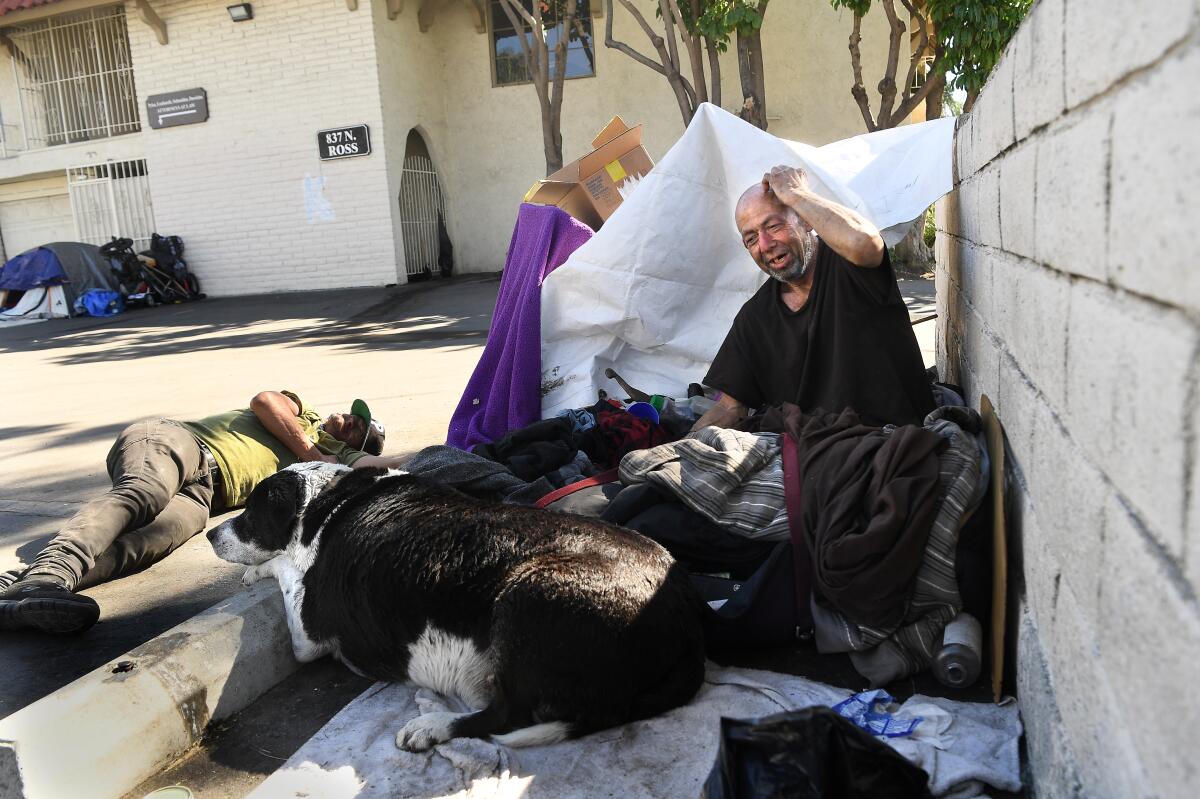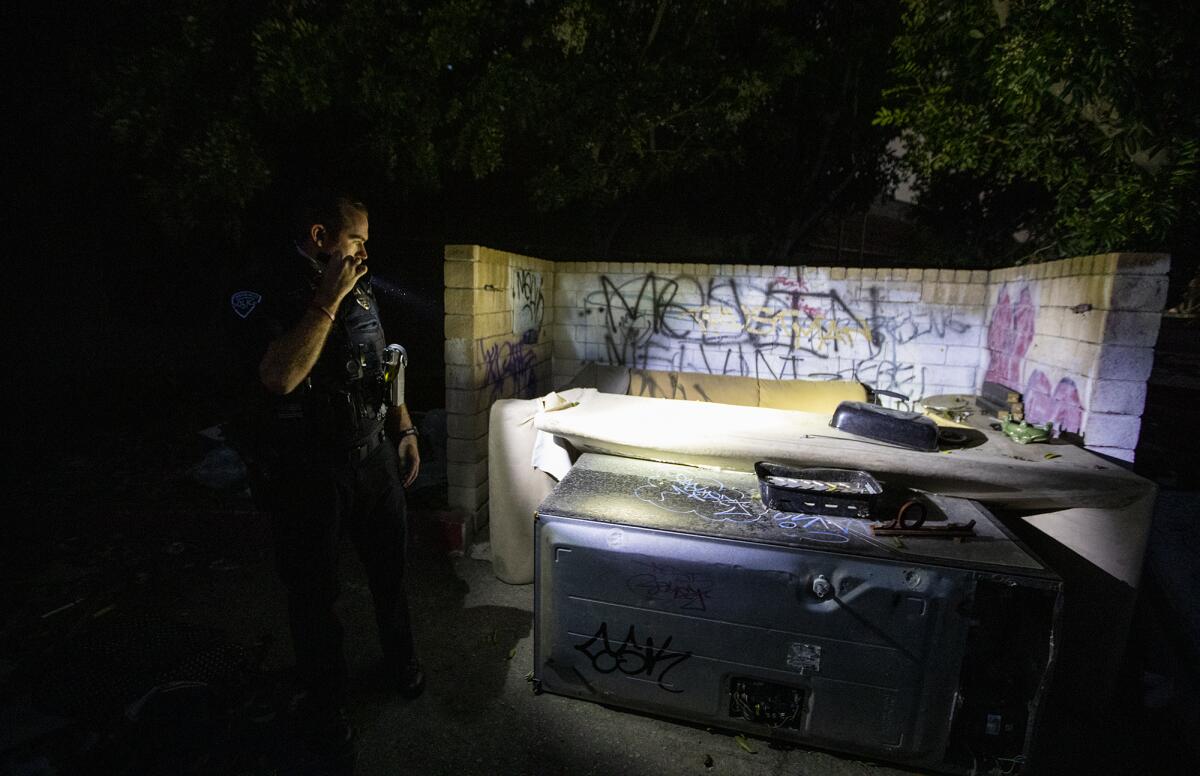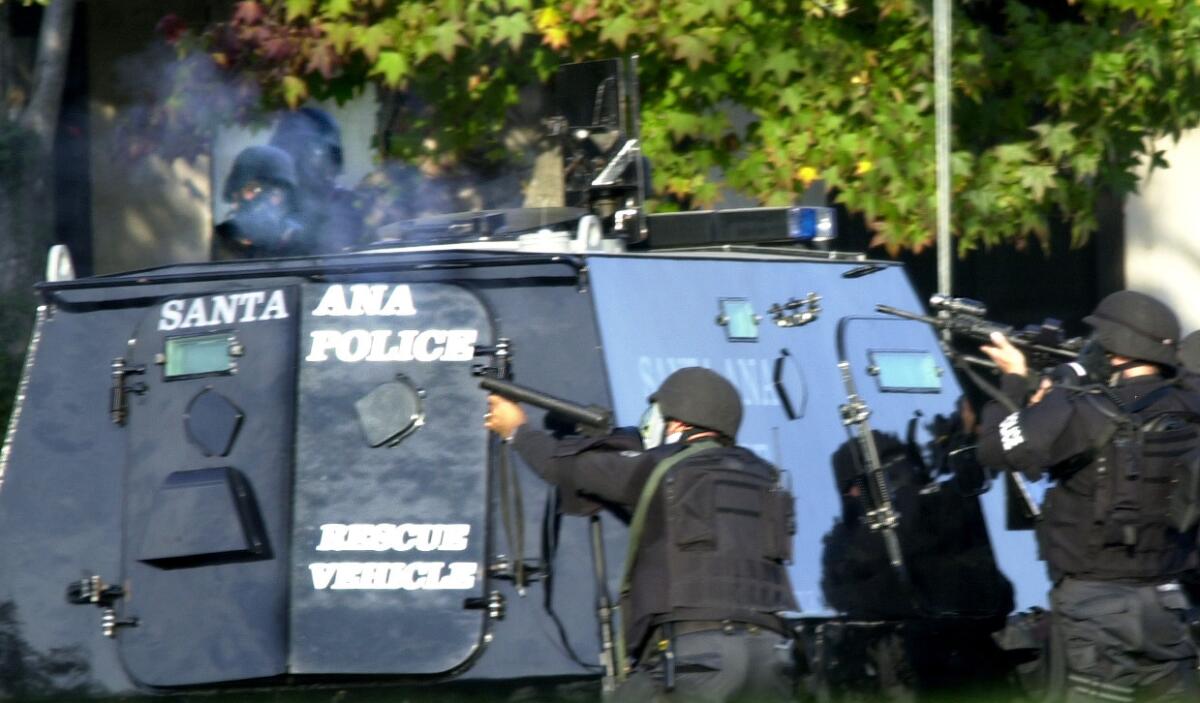Santa Ana extends shelter contracts amid legal battle and discusses police oversight commission

- Share via
Construction has resumed on a crucial homeless shelter in Santa Ana after the city filed a federal lawsuit against the company that owns the property.
The long-awaited Carnegie Avenue homeless shelter was nearing completion when the company that owns the property, Dyer 18 LLC, allegedly stopped working on it late last month.
The city isn’t sure when the site will open, but city spokesman Paul Eakins said Thursday that the city could start moving furniture in as early as mid-April.
In response to the construction and legal delays, the City Council voted this week to extend an agreement with the homeless services provider Illumination Foundation to continue providing temporary shelter for up to 75 of the city’s homeless at a Fullerton shelter through June 30. The council also extended an agreement with Families Forward for the operation of a temporary motel program for families in need and another agreement with the Salvation Army to use the Hospitality House temporary shelter.
“So we want to extend those tonight so that we’ll have a time when the shelter is completed, that we’ll be able to transition the individuals in an orderly fashion to the new homeless navigation center,” City Manager Kristine Ridge said at the meeting.

Following approval from the City Council, the city signed a long-term lease agreement with Dyer on March 1, 2021 to operate the shelter at the 29,000-square-foot building at 1815 E. Carnegie Ave.
The plan has been for the city to initially provide 200 beds at the Carnegie shelter before later adding another 100 beds. In the lawsuit, the city says that a major provision of the lease was that the city had the option to purchase the property for $9.2 million in the second year of the agreement — beginning on March 1 — for a period of five years.
However, the city claims that Dyer‘s owners are attempting to prevent the city from purchasing the property. It contends that Dyer may be retaliating in response to the city filing a state lawsuit in early March which made similar claims to the federal suit in order to get the company to abide by the terms of the lease agreement and allow the city to purchase the property.
Attempts to reach representatives at Dyer for comment were unsuccessful.
Eakins said the city has had a few meetings with a judge, but the litigation is still ongoing. The council discussed the cases during a closed session portion of this week’s council meeting.

Also at the meeting, the council’s police oversight ad hoc committee and city staff provided a rundown of what a Santa Ana police oversight commission could look like. The city has been considering the creation of a civilian-led commission since June 2020, a few weeks after the police killing of George Floyd sparked a nationwide reckoning with police brutality.
In August, the city hosted a forum to hear from a panel of experts and field questions from the public to better determine what specific model and what kind of authority its police commission should have. The city also encouraged residents to fill out a survey on its website to gauge public opinion on police oversight.
During a presentation at Tuesday’s meeting, city management assistant Daniel Soto said members of the ad hoc committee supported a hybrid of both the investigation-focused and auditor/monitor models that were discussed at the forum. The committee is comprised of Mayor Pro Tem Phil Bacerra, and council members Jessie Lopez and Johnathan Hernandez.
The investigation-focused model relies on independent investigations of complaints against officers, while the auditor/monitor model aims to instill change by making recommendations to police departments after reviews of police policies, practices or training. This model examines how the department deals with complaints investigations, including the quality of the investigations, findings and whatever discipline was given.
The city analyzed the models used by other cities in the state, including Anaheim, Berkeley and Oakland.
“As an ad hoc we decided that really duplicating what Anaheim does, or Oakland or Berkeley does, that didn’t really fit the need for the city of Santa Ana,” Lopez said. “Which is why we as a committee decided that we wanted to do a hybrid.”

Soto also provided further details on the current preferences of the ad hoc committee. He said the oversight commission could have subpoena power and access to a host of police records, including personnel records, computer-aided dispatch records, body-worn and in-car video, use-of-force reports, copies of Internal Affairs files and investigations and stop, search and arrest records.
These preferences are not necessarily guaranteed in whatever model may be approved later by the City Council. Bacerra said the committee has not yet put forward a formal recommendation.
The ad hoc committee is still analyzing and discussing the issue and staff will be working on drawing up an ordinance for council consideration.
The city is also looking into possibly amending its charter to include the commission.
“I think there’s more work to be done, but I agree we need to get this done this year,” Bacerra said. “There’s no reason to continue to push this out, but I do appreciate the fact that between staff and members of this council, there has been a desire to get it right.”
While members expressed support for the formation of a civilian police oversight commission, some council members disputed certain aspects. One particular item that Hernandez and Councilwoman Thai Viet Phan differed on was allowing former law enforcement officers on the oversight commission.
Phan said that she has spoken to a number of individuals who said it’s important to prohibit current and former officers from serving on the commission. Phan disagreed and said that law enforcement officers also need to trust the processes of an oversight commission.
“For me, I would lose credibility and faith if I am going before a commission that decides my professional future, if none of them have ever had the experience of serving in that capacity,” Phan said. “I think that by allowing former law enforcement, maybe not current law enforcement, we have that experience, that capacity, but also continue to build that public trust.”
Hernandez responded to Phan’s comments, contending that police are reluctant to expose the wrongdoing of other officers.
“The same culture that we have in the barrios, where people say, ‘snitches get stitches,’” Hernandez said. “This culture also exists in policing.”
All the latest on Orange County from Orange County.
Get our free TimesOC newsletter.
You may occasionally receive promotional content from the Daily Pilot.




